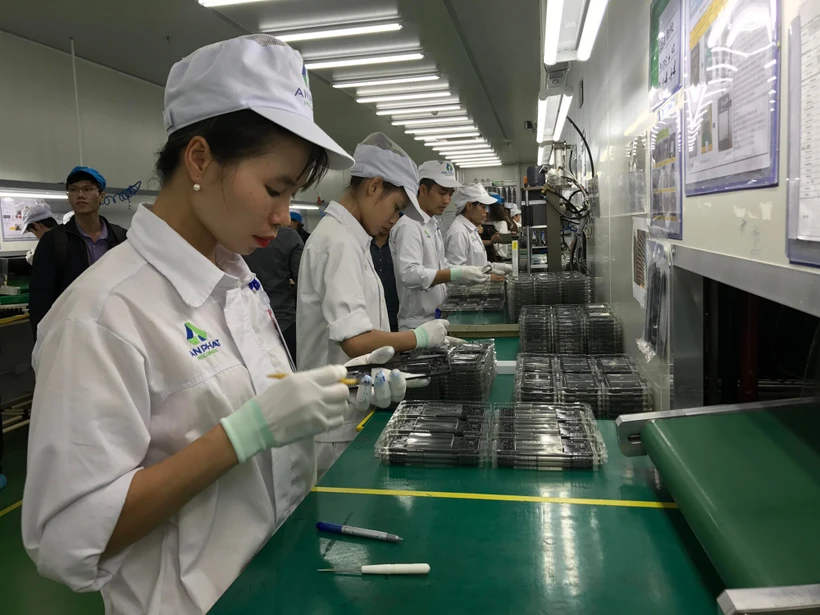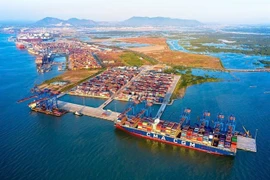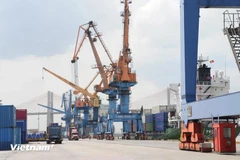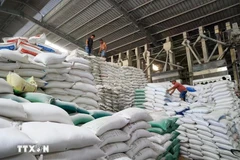Hanoi (VNA) - Vietnam’s trade sector continues to be a driving force in economic growth, with total import-export turnover reaching an impressive 163 billion USD as of March 15, a 12% surge year-on-year.
This robust performance, representing an additional 12 billion USD compared to the same period last year, underscores trade's resilience amid global economic uncertainties.
Enterprises push forward amid global headwinds
Since the beginning of the year, Vietnam’s export turnover has climbed to 82.3 billion USD, marking a 9.1% increase, while imports reached 80.49 billion USD, up 15.2%. This has resulted in a trade surplus of 1.81 billion USD.
To sustain this momentum, businesses are ramping up efforts to secure market share and drive export value. Notably, 13 product categories have surpassed 1 billion USD in export revenue, collectively accounting for 65 billion USD, 79% of the country’s total exports. Leading the charge are computers and electronic components, which generated 16.5 billion USD, a remarkable 29.1% rise year-on-year. Mobile phones and accessories followed closely with 15.7 billion USD in exports.
Other high-performing export sectors include electronic equipment and components, which soared 29.2% to 3.75 billion USD, while coffee exports surged 42% to 675 million USD. Meanwhile, seafood exports climbed 9.4% to 603 million USD, showcasing Vietnam’s diverse export strength.
However, global trade faces a slowdown, with the International Monetary Fund (IMF), World Bank (WB), and the Organisation for Economic Cooperation and Development (OECD) projecting a modest 3.2% to 3.3% growth in 2025. This reflects challenges such as geopolitical tensions, energy crises, and supply chain disruptions, all of which could impact Vietnam’s export-driven economy. Stricter trade policies from major markets like the EU and the US, particularly concerning sustainability and environmental standards, add further complexity to Vietnam’s trade landscape.
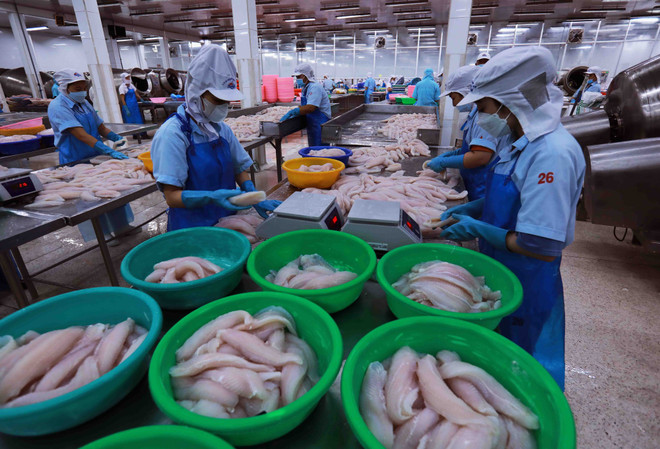
Navigating policy shifts for continued growth
Despite its role as a key growth driver, Vietnam's export faces new challenges due to shifts in US trade policies. These changes are a growing concern, as their unpredictable nature may impact global trade and economic growth.
Starting April 2, the US implemented new trade and tax policies that could affect international supply chains and the global economy. Businesses need to proactively monitor these developments and prepare accordingly.
At a recent seminar on US trade policies and Vietnam’s response, Nguyen Nam Tran, CEO of SGS Vietnam, a leading quality control and certification firm, pointed out a lack of in-depth understanding of new US regulations as a major challenge for Vietnamese exporters. These policy changes will not only impact Vietnam’s export turnover but also drive up compliance costs, adding pressure on manufacturers and exporters, she noted.
Vietnamese businesses are urged to stay informed and actively respond to evolving global trade policies to sustain their competitive edge in international markets.
Since the Trump administration, Vietnamese businesses have closely tracked US trade policies, recognising the potential risks and opportunities. While challenges persist, Vietnam’s key export industries (electronics, textiles, footwear, wood, and seafood) are expected to continue driving growth into 2025.
Electronic export is forecast to maintain its upward trajectory in 2025, fueled by rising global tech demand. As of March 15, the electronics sector had already contributed 28 billion USD, over 30% of Vietnam’s total exports. If this growth persists, the sector could reach nearly 140 billion USD by year’s end.
The textile and footwear industries, despite facing tougher sustainability standards from the EU and US, remain resilient. By the end of Q1 2025, textile exports are projected to grow by 9%, wooden products by nearly 9%, and footwear by 10%.
According to the UK-based Kelmer Group, Vietnam continues to reap the benefits of free trade agreements, unlocking significant export opportunities. By diversifying supply chains and attracting multinational corporations, Vietnam is solidifying its position as a global manufacturing hub. Electronics, garment-textiles, and renewable energy have particularly drawn strong foreign direct investment (FDI), further cementing Vietnam’s role in global commerce.
To navigate trade barriers and stay competitive, SGS Vietnam underscores the need for businesses to transition from low-value processing to high-value production. Strengthening domestic manufacturing capabilities, enhancing product quality, and aligning with international standards will be key to maintaining Vietnam’s stronghold in global trade./.
